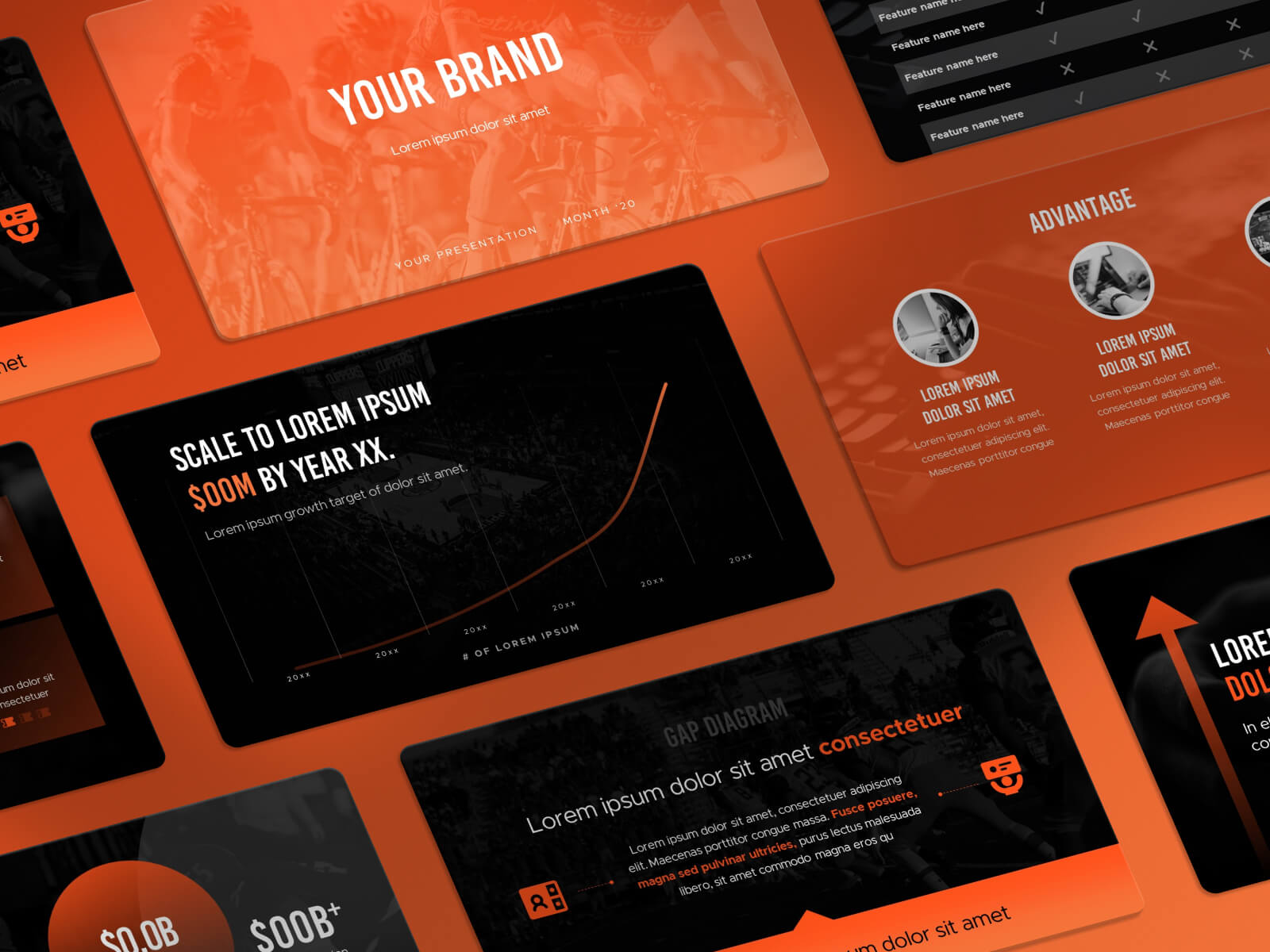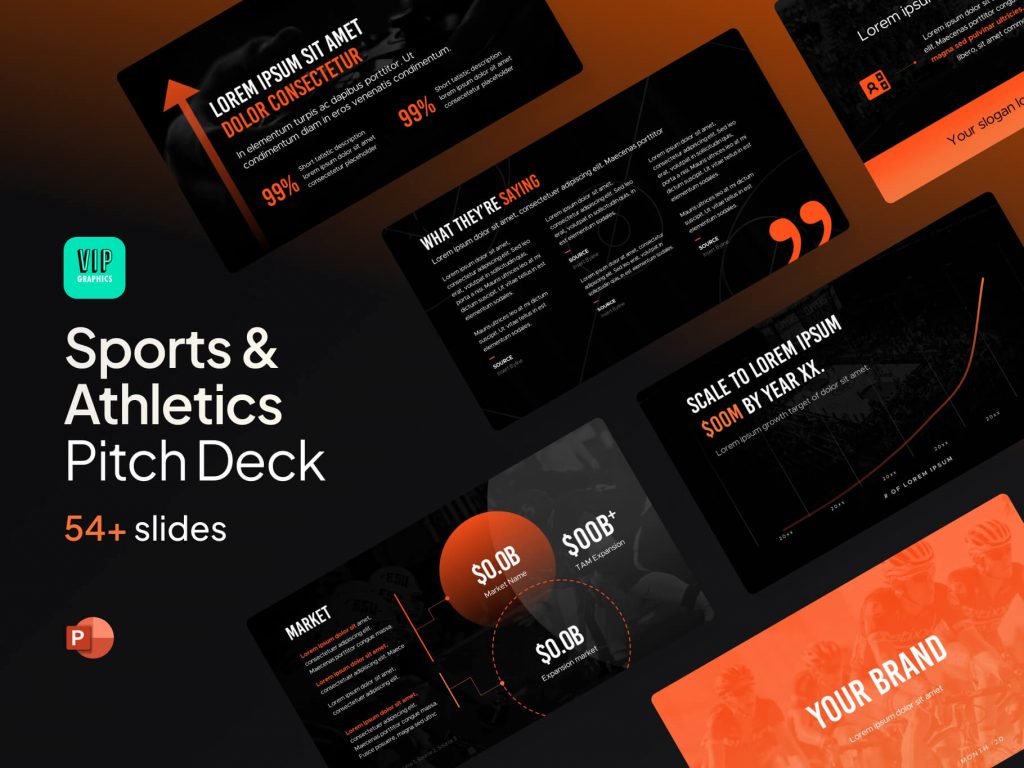The sports industry is rich with opportunities for entrepreneurs ranging across a wide range of applications: from sports tech and analytics, to sports news/media, fantasy sports & sports betting, sportswear, athletic technology, NIL sponsorships, and more.
VC funding for sports startup has been volatile over the last decade, ranging from $800M in 2024 to billions invested per annum in hotter markets. Many sports-focused VCs like Courtside Ventures and KB Partners have sprung up in recent years, as well as venture funds founded by prominent athletes like Serena Williams (Serena Ventures), Kevin Durant (Thirty Five Ventures), and LeBron James (LRMR Ventures)l
In this article, we’ll guide you through creating a winning pitch deck that will get your sports startup noticed by investors.
What is a pitch deck? What is its purpose?
Regardless of what you’re building (whether it’s an app or a consumer product), every sports startup founder needs a pitch deck: a succinct presentation used to win investors, customers, and sponsors for your company. Note: there are other types of pitch decks that many B2C sports startups will require, such as retail distribution decks and sponsorship decks, but in this article we’ll be focusing on investor pitch decks.
What slides should be in your sports startup’s pitch deck?
Here’s a breakdown of the essential slides that belong in every sports startup’s investor pitch:
Cover Slide
As the first slide in your pitch deck, the cover is essentially your first impression with investors, so make it count. Typically this slide will include your logo, tagline, and any relevant imagery (ie. your app mockup or product photos). Be sure to use consistent branding throughout your presentation for a professional look.
Problem Slide
Every successful startup solves a critical problem or gap in the market. In some pitch decks, the slide will be less about a specific problem or pain point and more about a gap in the market. For instance, if you’re pitching a new fantasy sports app, you might highlight what the existing players in the industry are missing.It’s important to include stats to support any of your claims and tell a relatable story that investors can connect with.
Solution Slide
The next slide of your pitch deck addresses how you solve this problem. Don’t try to cram too many features into this slide. The point is to get across the key value proposition (meaning the benefits) of your solution. Wherever possible, use visuals such as photos of your product or your customers to visually communicate.
Focus on user experience and emphasize key features that address the problem.
How It Works Slide
Often, it makes sense to have a separate slide explaining how the product works, given that you don’t want to spend too much time on features in the solution slide. Using real world examples and photos can help bring your idea to life for investors. Even if you haven’t built your product yet, it’s a good idea to invest in mock-ups or renders so investors get the feeling that they’re investing in something real, not just an abstract idea.
Competition Slide
Next, you’ll want to speak to how your solution stands out from the rest of the market. The competition slide should highlight how you differentiate from both existing solutions and potential future threats to your business.
A common mistake founders make (especially those building truly novel technology in untapped markets) is to assume that they don’t need a competition slide. Even if no one is necessarily doing exactly what you are, your customers are probably using some kind of hacked together low-tech solution. Every startup has competition, so don’t skip this slide.
Advantage Slide
The advantage slide addresses a slightly different topic than competition. While competition focuses on how your solution is better for customers, the advantage slide speaks to why your company will succeed as an investment. For example, patented technology or exclusive partnerships can form a strong moat to protect your business from competitors.
Market/Opportunity
The market slide can be make or break for an investor pitch. At the end of the day, institutional investors will only back companies that can generate a significant ROI, which typically translates to targeting a small fraction of a multi-billion-dollar market. That said, don’t cite generic figures like the entire sports & athletics industry size; you should aim to find figures that are specific to the niche you operate within. Your market analysis should demonstrate that you’ve given a lot of thought to the potential demand and revenue your product(s) will generate.
Customer Applications Slide
Some companies will take market analysis further and break out the applications or target customer groups they serve. This slide will usually talk about the specific features and benefits that appeal to each one of these customer groups. Companies that are already generating revenue may cite specific case studies or success stories here.
Traction Slide
This leads nicely into the traction slide, where you talk about what you have accomplished so far. Traction can come in many forms. Most often startups will talk about user and revenue growth, but it’s also worth mentioning other milestones, such as intellectual property filings, significant partnerships, press coverage, and customer reviews. The goal of this slide is to show validation of demand for what you’re building.
Business Model Slide
The business model slide talks about how your company will make money. Early stage startups will typically break out their revenue streams and include pricing, whereas companies that are already generating income will talk about unit economics.
Team S;ode
The team slide seems like one you can’t go wrong with, but it’s easy to mess up. The goal here isn’t to write a long bio about your entire life story, but rather focus on what positions you and your team to be the right people to build this. Talk about specific experiences and past companies you’ve worked at that position you to succeed in this endeavor.
Investment Slide
The ask is usually pretty formulaic, including the amount you’re looking to raise and broad strokes on use of funds or milestones that this capital will support.
Some startups will skip the ask slide, especially if it’s for a demo day presentation or the first of several meetings with the fund. However, a well-structured ask slide can help create urgency and inspire action to speed up the fundraising process. If you have hard or soft commits, it’s a great idea to emphasize that in the ask slide. Later stage startups will often explicitly mention that their round is already over committed to create FOMO for investors.
Roadmap
The roadmap slide should show your vision for the next 18 months and beyond, or however much runway you’re raising for. Make sure to speak to both product development and customer acquisition/growth milestones, as tech startups often focus on the former more than the latter. You also want to speak to your long-term vision beyond this raise so investors get an idea of where this company is going.Retry
Tips for designing a sports pitch deck
Creating an effective sports pitch deck requires a strategic approach. Here are some tips to help you design a compelling presentation:
- Don’t just focus on market sizing: Showcasing a massive market is great, but use current trends to illustrate why your solution is crucial for the “right now”.
- Market first, technology second: Investors care more about the problem you solve and the market opportunity than the technical details of how it works.
Examples of sports startup pitch decks
If you’re looking for a good reference while creating your sports startup’s pitch deck, take a look at our list of the top 15 sports pitch decks, which includes notable startups that successfully raised funding, such as Overtime Media and Kero Sports.
Ready to create your startup’s pitch deck?
Remember, a compelling story paired with a well-defined business plan is the key to scoring big with investors for your startup. Check out this Sports Pitch Deck Template by VIP Graphics, designed by experts to jumpstart the fundraising process for sports startup founders.

